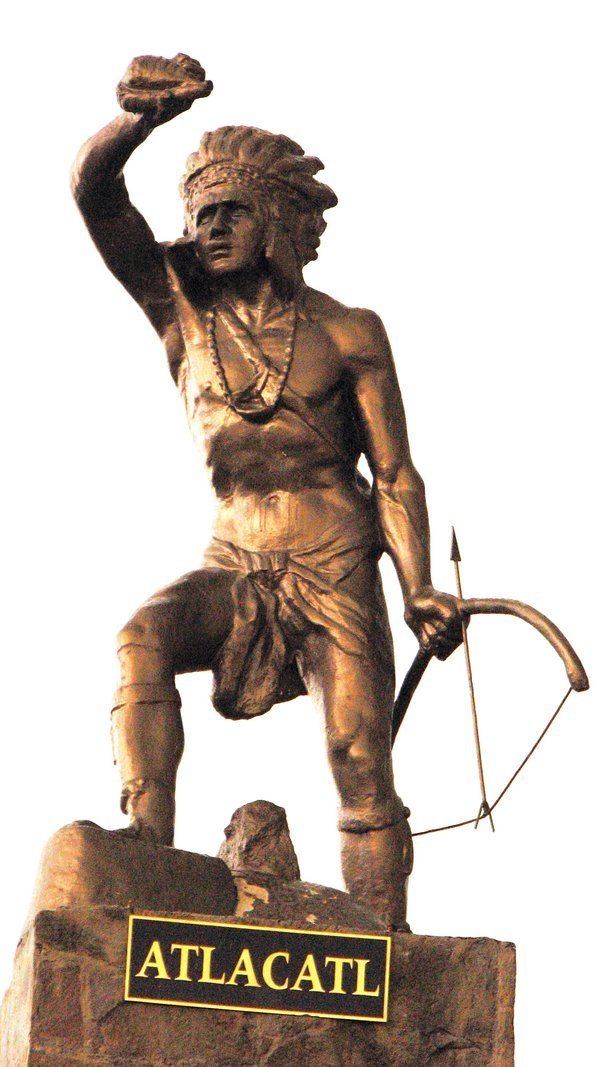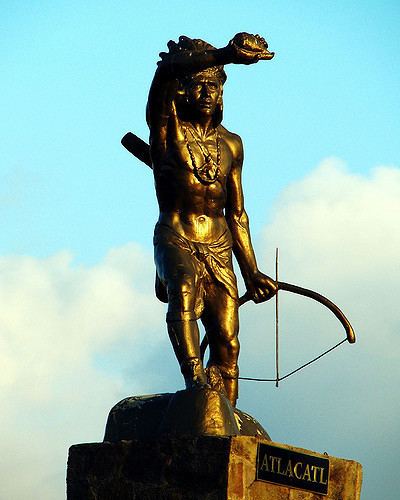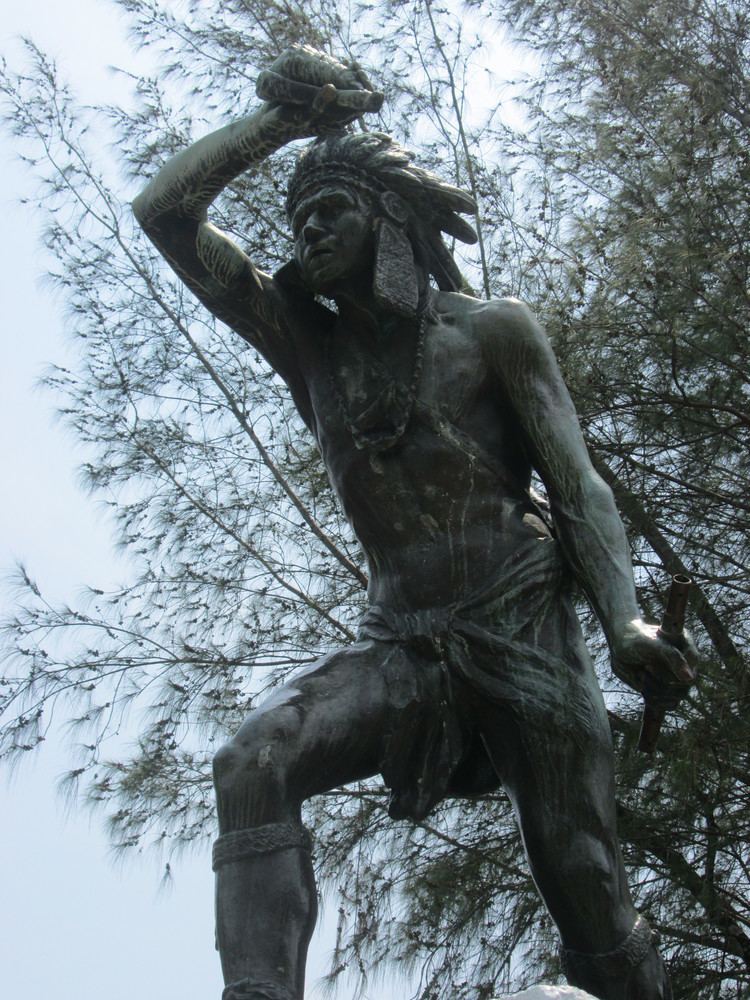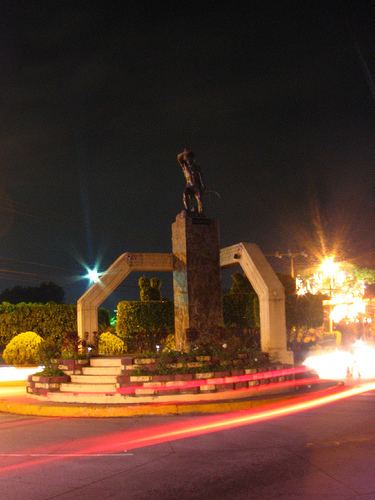Name Atlacatl Atlacatl Died 1528, Cuzcatlan | ||
 | ||
Batallon biria atlacatl memorias por la patria i con dios
eAtlacatl (Nahuatl Ātlācatl: ātl "water", tlācatl "human being" – whose death is sometimes put at 1528) is reputed to have been the name of the last ruler of an indigenous state based around the city of Cuzcatlan, in the southwestern periphery of Mesoamerica (present-day El Salvador), at the time of the Spanish conquest. Atlacatl appears to have been a myth, however, as no contemporary chronicler mentions him. Rather, much as in other Latin American countries, the romantic figure of the tragic Indian resistance leader is deployed in the nationalist discourse to lend grandeur and romance to the nation's formation in the "meeting of two worlds". The myth remains powerful locally, however, and the name "Atlacatl" has been adopted by one of El Salvador's elite army battalions (see Atlacatl Battalion).
Contents
- Batallon biria atlacatl memorias por la patria i con dios
- Atlacatl b i r i podcast 2 pt apoyo de poblacion guerrilla ofensiva 89 eng sub
- References

Cuzcatlán was a strong state that had incorporated several Nahua regions in the western and central territory of today's El Salvador. With a standing army and lucrative cacao exports, this wealthy state had resisted Mayan several invasions and was one of the strongest in the region. It was the only polity in the region to maintain a standing army.

The existence and fable of Atlacatl appears to have originated in a historian's misreading of Spanish chronicles. It was later developed as a nation-building myth in modern Salvadoran nationalist discourse, symbolising Cuzcatlán's courageous resistance against the invading Spanish forces. For example, some stories attest that it was Atlacatl who wounded Alvarado in the thigh (no historical account supports this view, the archer remaining unknown). According to another account, when Pedro de Alvarado and his forces arrived at Atehuan (Ateos) he received a message sent to him by Atlacatl in which Atlacatl acquiesced to Alvarado's demand for Cuzcatlán's surrender. Alvarado's own account records that when he entered the city of Cuzcatlán he found it partly abandoned, the men all having fled to the mountainous region nearby. Alvarado sent a demand to them for their surrender, but instead received the answer: "if you want our arms you must come to get them from the mountains". In the myth, it was Atlacatl who sent this message.

Alvarado's forces launched a furious attack on their mountain positions in which many horses, Spaniards and their native auxiliaries were killed. Alvarado retreated from Cuzcatlán on 4 July 1524.

Two years after this battle, Alvarado's kinsman Gonzalo de Alvarado had founded a Spanish base at San Salvador (August 1526), from where the Spanish forces continued to raze the surrounding districts and combat the remaining Pipil resistance. Finally, in 1528, Diego de Alvarado and his Indian auxiliaries set out on another attack on Cuzcatlán, during the defense of which the Nahua forces were defeated. One embellishment of the Atlacatl myth is that he jumped into a volcano to remain an unconquered legend.
